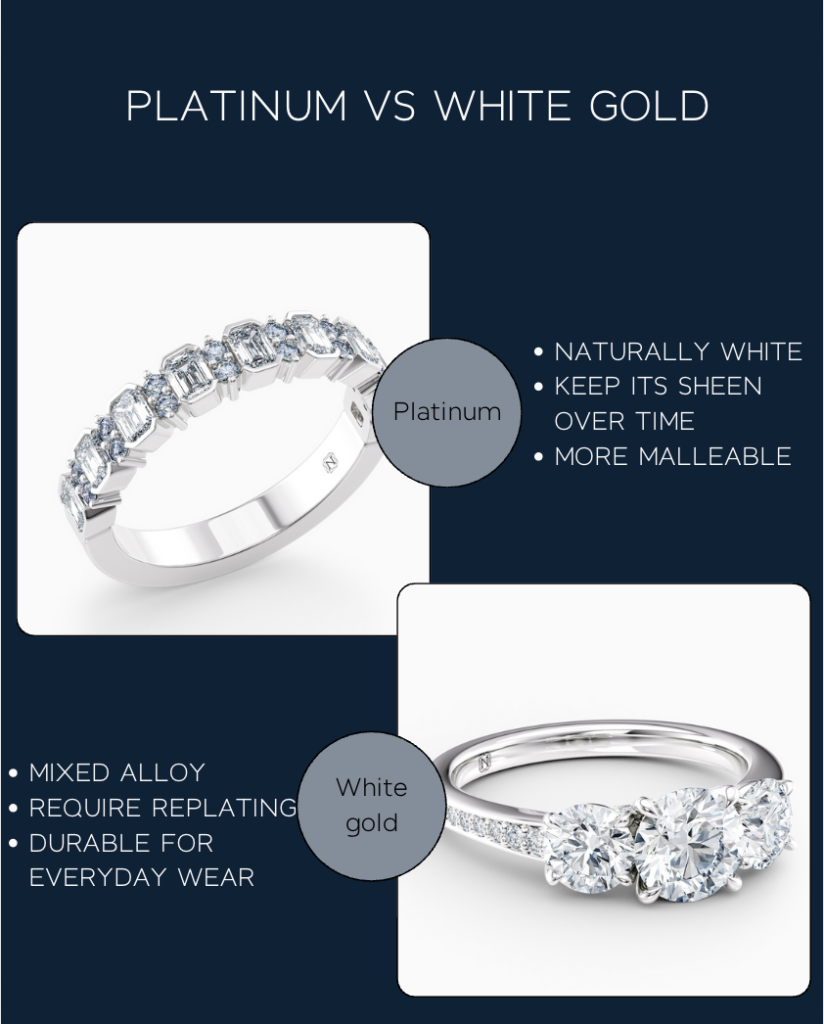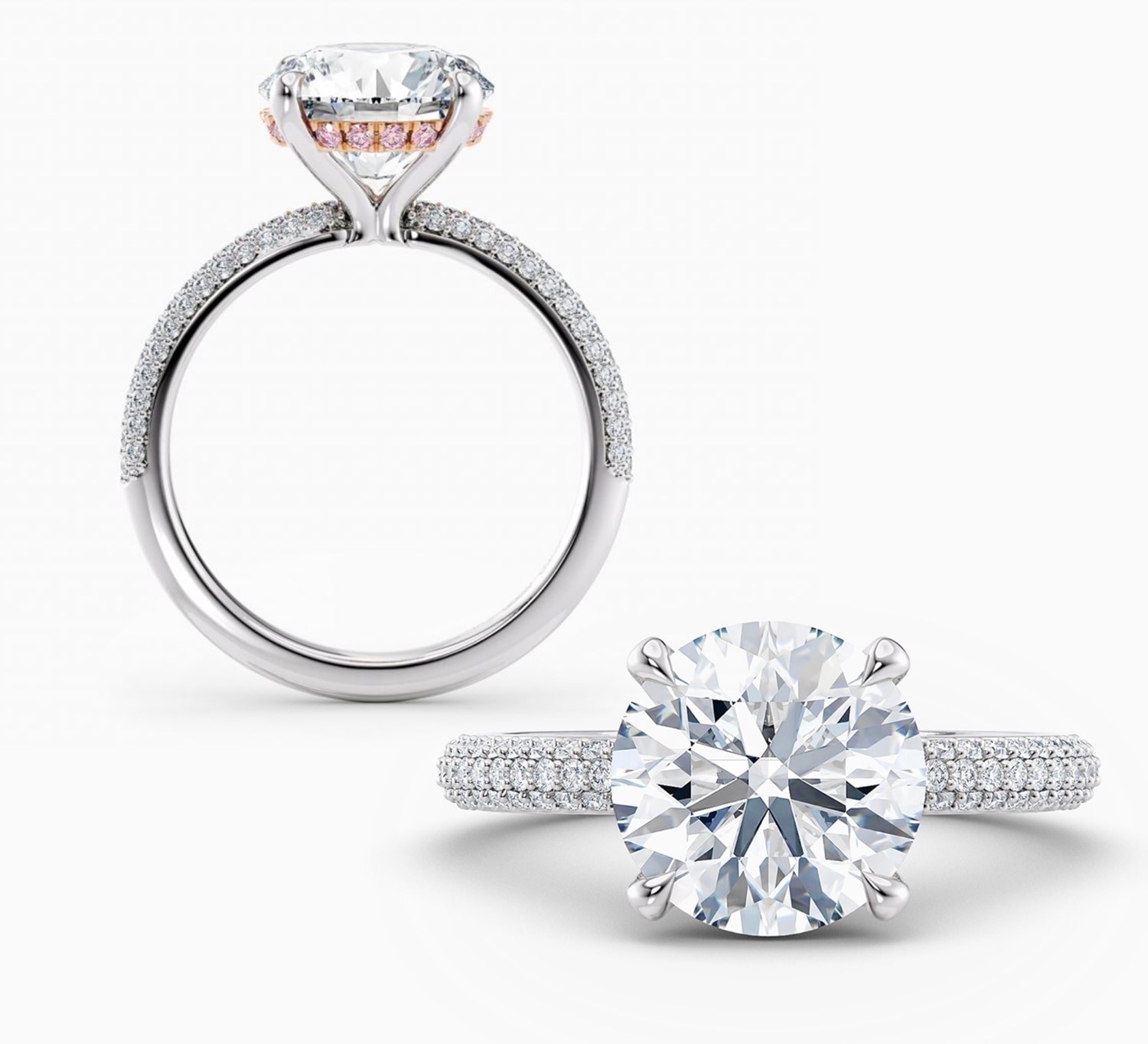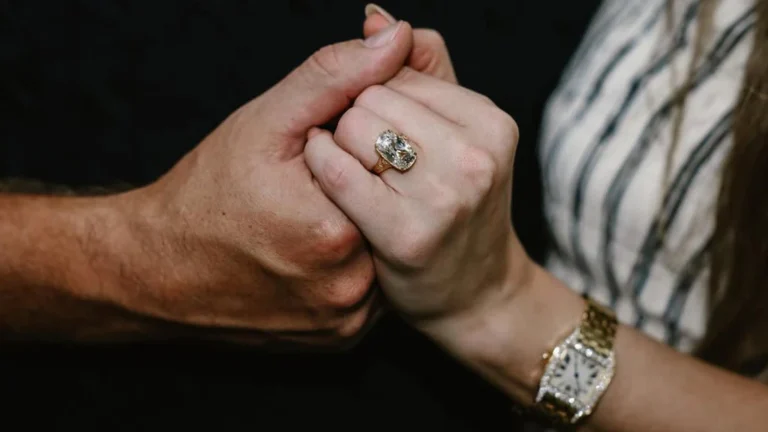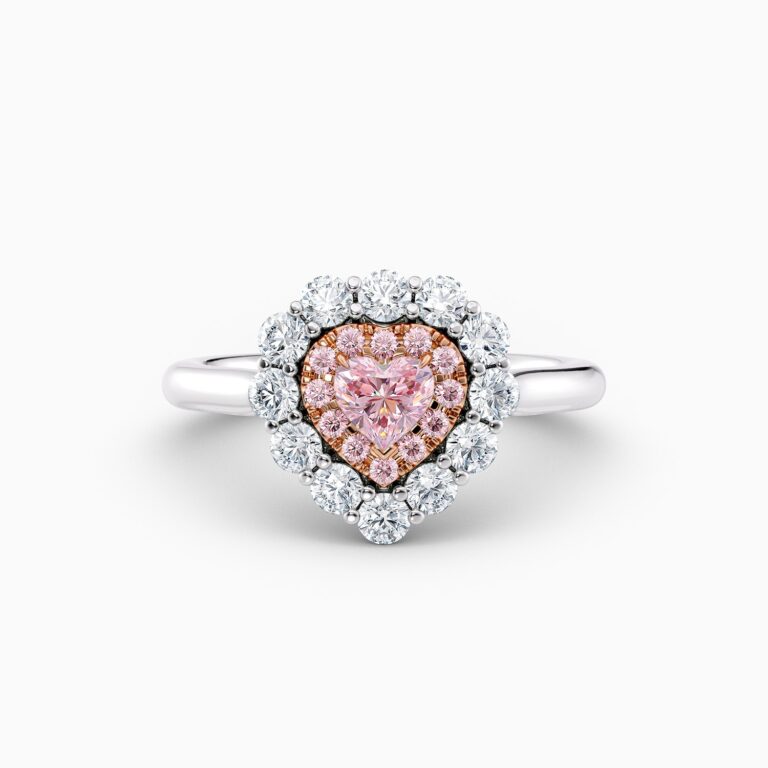When purchasing engagement rings, the difference between white gold and platinum can confuse customers, due to their similar appearance.
Both of them are popular choices for engagement rings, however, they are completely different in their composition, wearing experience and crafting requirements.
The following article will outline the difference between white gold and platinum. It will be very helpful for you to learn more about these two beautiful metals before you start shopping for jewellery.
What is White Gold?
White Gold is a mixture of metals (an alloy), with that, keep in mind that gold when mined is naturally yellow. White gold is created by blending other metals with pure gold to change its colour from yellow to white.
White Gold is alloyed with white metals like zinc,nickel, palladium and platinum to turn it into a grey colour which is then Rhodium plated to give it a mirror-like white finish that you see in the stores.
White Gold Specs – 18ct white gold has a Moh Hardness of 2.5-3 White gold has the same properties as yellow gold – meaning that 18ct white gold is 75% gold mixed with 25% Alloy.
What is Platinum?
Platinum is a precious metal that is well known for its durability and its beautiful shine. Platinum is heavier which makes it denser and more durable than other metals.
Most Platinum Jewellery is 95% pure and it is also hypoallergenic and does not need the constant maintenance of Rhodium Plating like white gold, as it is naturally white.
Platinum is not a very easy metal to work with and is totally unforgiving, so you need to be a real Master jeweller to know how to work with it.
Therefore, many Jewellers may steer you away from it to satisfy their manufacturing capabilities.
Platinum Specs – Platinum has a Moh Hardness of 4-4.5 Platinum is also purer than white gold. Measured in parts per thousand, platinum jewellery is typically 850-999 parts pure platinum (85%-99.9%), with the remainder made up of Alloy (ruthenium).
White gold isn’t as pure or durable. Platinum is denser, heavier and stronger than white gold. Platinum is about 60% more dense than Gold. Platinum is said to be 35 times rarer than gold also.
The difference between white gold and platinum

Colour:
White gold is not a pure white metal, but a mixture of gold with other white metals. After mixing with the other metals, some white gold looks grey, or even still yellow, and it needs Rhodium plating to make it white.
Platinum is a naturally white metal that does not need any other metal to make its white colour. It will never change and keeps its white colour for ages.
Wearability:
White Gold is much more vulnerable than platinum. Because it is alloy, after years of wearing, the white gold will change in its colour to yellow and easily get scratched.
Over time, you may need to have your white gold ring to the jeweller to fix it by re-dipping it in rhodium to maintain its colouring and shine. Additionally, certain alloy components (e.g., nickel) may trigger allergic reactions in sensitive individuals.
On the other hand, it benefits from its dense crystalline structure, platinum gains more durability, offering better scratch resistance compared to white gold.
Crafting requirement:
White gold processing aligns with traditional goldsmithing techniques. With a melting point of 1,064°C and good fluidity, it suits difficult and complex casting designs.
Its relatively low technical skills explain its prevalence in mass-market jewellery. However, improper soldering can cause colour loss at joints due to alloy mismatches.
As we mentioned before, platinum has a Moh Hardness of 4-4.5, its melting point is as high as 1768 °C, and its poor fluidity makes it much more difficult for craftsmen to make settings and modelling with it.
Price:
Currently whilst the price of platinum is lower than that of gold the manufacturing time to create an equivalent piece in white gold is much less so a piece made in either metal costs roughly the same.
In Conclusion:
Choosing between white gold and platinum involves balancing aesthetics and practicality. White gold suits buyers who have a love of gold and the brilliant white look of a rhodium plated piece.
Platinum, with its hypoallergenic nature and eternal durability, appeals to those valuing legacy and craftsmanship. Therefore, with all that in mind I hope that this puts it in perspective of the differences between white gold and platinum.
Before deciding, we recommend trying both metals to experience their distinct weight and luster firsthand—true luxury lies in the harmonious union of beauty, comfort, and enduring quality.
References:
- https://www.brides.com/platinum-vs-white-gold-5120026


